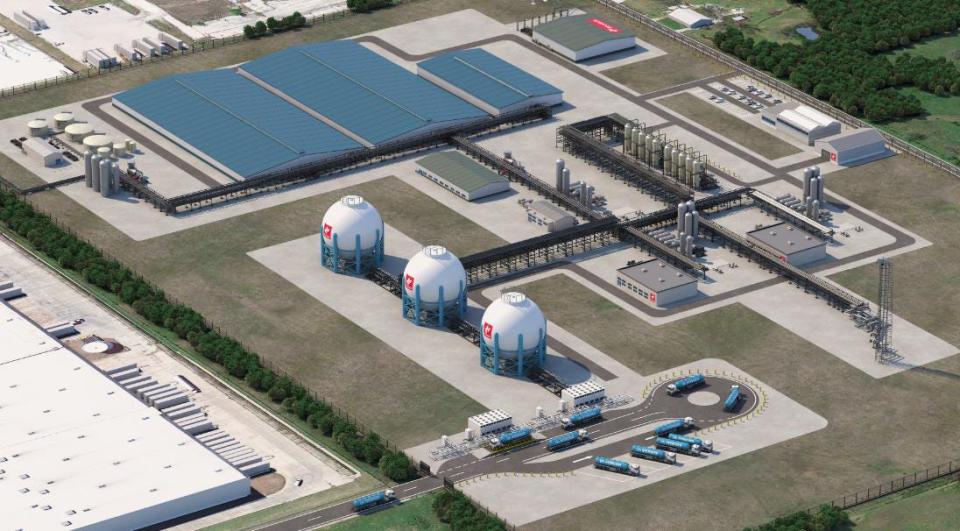Oklahoma, Arkansas and Louisiana's plan to build hydrogen energy hub draws federal interest
Oklahoma, Arkansas and Louisiana could be one step closer to securing $1.25 billion in federal funding after the U.S. Department of Energy has asked for more information about how the states would use the money to develop regional infrastructure for the production, transportation and storage of hydrogen as a fuel source.
The three states originally launched a partnership this year to create the HALO Hydrogen Hub, which could eventually be part of a network of clean hydrogen producers, consumers and connective infrastructure. The Department of Energy's goal is to to accelerate the use of hydrogen as a clean energy carrier that can deliver or store tremendous amounts of energy, and it plans to spend about $7 billion across the country to create that network.
President Joe Biden has set a goal of building a 100%-clean electrical grid by 2035, and net-zero carbon emissions by 2050. Oklahoma Gov. Kevin Stitt said the state has a "more of everything" approach, and partnering to create the HALO Hydrogen Hub will further diversify the nation's energy portfolio.
"Oklahoma is honored to be included in the DOE invitation to submit a bid for the Regional Clean Hydrogen Hubs Program. We share with Arkansas and Louisiana the same goal for production, use and economic impact that can result from creating a hydrogen economy," Stitt said. "The opportunities and abundant resources in Oklahoma complement our partners, and I am confident that our three state coalition can land this hub and become the nation’s heartland for hydrogen."
Stitt, Arkansas Gov. Asa Hutchinson and Louisiana Gov. John Bel Edwards are banking on their states' extensive history with fuel infrastructure and production as they seek out the $1.25 billion program grant. The HALO Hub concept paper was submitted to the Department of Energy on Nov. 5, and the agency formally asked the states to submit a full application for funds by April 7, 2023.
An agreement signed by the governors in March promised to rely upon, utilize and partner with Historically Black Colleges and Universities, and tribal governments, to grow and cultivate expertise in the field.
According to the Department of Energy, the United States produces about 10 million metric tons of hydrogen each year. Current demand for hydrogen primarily comes from petroleum refining and ammonia production. However, hydrogen can be used across multiple sectors to enable zero or near-zero emissions in other chemical and industrial processes, integrated clean energy systems and transportation.
In 2021, a task force led by Kenneth Wagner, who at the time served as Oklahoma's secretary of energy, produced a report predicting that Oklahoma could add more than 6,000 jobs to its economy if hydrogen efforts were pursued.
The report also predicts hydrogen production could generate an additional annual impact on the state's economy of between $1.5 billion and $2.5 billion, based on demand for the fuel.

This article originally appeared on Oklahoman: Oklahoma asked to submit application for hydrogen hub grants

